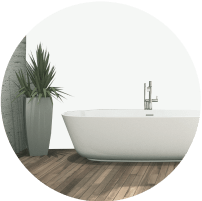# Creating a Seamless Flow: Integrating Kitchen and Dining by using Custom Design
# **The Importance of Integration in Home Design**
Why is Integration Necessary?
When thinking renovations, many owners omit the importance of integrating their kitchen with their eating sector. Why should still this be counted? Well, that's undeniable: an included space promotes fluidity and complements consumer sense. Instead of feeling confined inside separate rooms, the open movement creates an inviting ecosystem that encourages interplay.
The Benefits of Open Concept Living
Open suggestion designs have received immense repute over time for countless purposes:
1. **Enhanced Natural Light:** Without partitions blockading easy resources, equally spaces benefit from typical illumination.
2. **Social Interaction:** Cooking will become a social exercise as opposed to a solitary venture.
three. **Versatility:** An built-in design enables for multifunctional area usage—eating can fast remodel into entertainment or workspace.# **Key Elements for Seamless Integration**
The Right Layout Choices

- **L-Shaped Layouts:** These allow for smooth motion among cooking and dining zones.
- **Island Installations:** An island can serve a number of purposes—serving counter, cooking region, or added garage.
Optimal Material Selections
Choosing ingredients wisely performs a pivotal function inside the total sense:
- **Countertops:** Select sturdy surfaces like quartz or granite that complement both kitchen and eating aesthetics.
- **Flooring:** Continuity in floors supports visually unify spaces—think hardwood or tile techniques.# **Furniture Selection: Harmonizing Spaces**
Choosing Dining Furniture That Complements Your Kitchen
The perfect fixtures bridges gaps among layout components:
- Opt for tables that replicate countertop patterns.
- Choose chairs that harmonize with cabinetry finishes.
# **Texture Variations: Adding Depth**
Mixing Textures for Visual Interest
Incorporating various textures provides intensity on your layout:
- Combine mushy counter tops with rustic timber dining tables.
- Balance demanding surfaces with gentle textiles like cushions or curtains.
# **Balancing Aesthetics with Functionality**
Prioritizing Practicality in Design Choices
It’s critical to strike a stability between seems to be and usability:
1. Ensure sufficient storage suggestions are achievable in both areas—feel integrated cupboards or open shelving.
2. Plan your workflow effectually; home equipment deserve to be simply handy without obstructing motion paths.
# **Sustainable Practices in Renovation**
Eco-Friendly Choices Matter
When renovating your kitchen-eating integration, think sustainable practices:
- Utilize reclaimed supplies for countertops or ground.
- Choose potential-powerful appliances to cut back consumption.
# Conclusion
Creating a continuing circulate between your kitchen and eating facet by way of tradition design is not really simply an aesthetic possibility but a way of living enhancement resolution that resonates deeply inside modern-day dwelling dynamics today! By incorporating shrewdpermanent layouts alongside thoughtful material decisions & lights methods even as balancing aesthetics & functionality—you’ll craft an atmosphere primed for bright interactions & memorable moments shared around scrumptious abode-cooked nutrition!
In essence—the journey towards reaching this pretty integration begins at information how most useful each one element works mutually; so don’t hesitate to explore opportunities except you find what in truth speaks volumes approximately *you* as an special!
